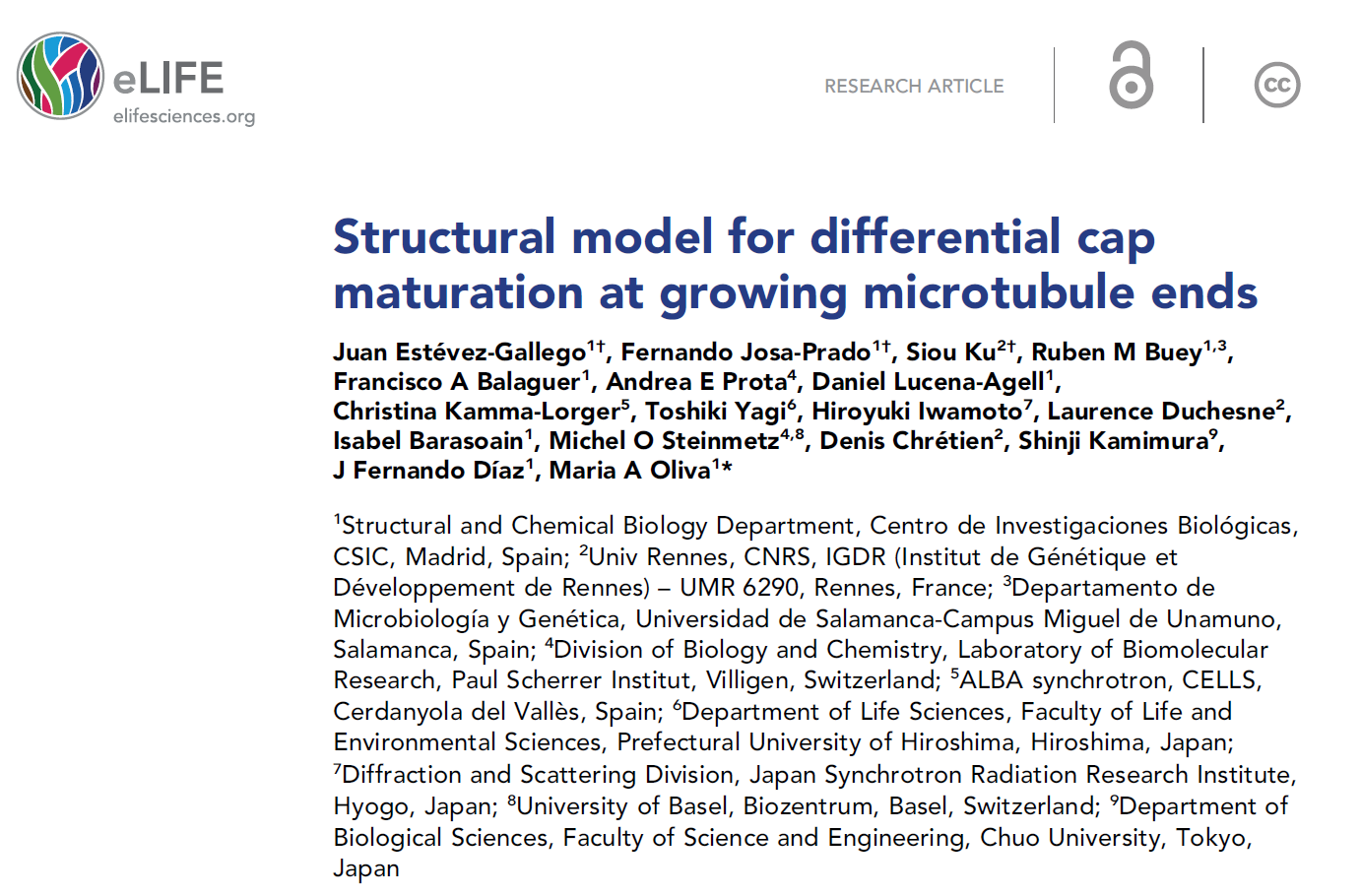Science News
Structural model for differential cap maturation at growing microtubule ends
Mar 10, 2020 | News

Microtubules (MTs) are hollow cylinders made of tubulin, a GTPase responsible for
essential functions during cell growth and division, and thus, key target for anti-tumor drugs. In
MTs, GTP hydrolysis triggers structural changes in the lattice, which are responsible for interaction
with regulatory factors. The stabilizing GTP-cap is a hallmark of MTs and the mechanism of the
chemical-structural link between the GTP hydrolysis site and the MT lattice is a matter of debate.
We have analyzed the structure of tubulin and MTs assembled in the presence of fluoride salts that
mimic the GTP-bound and GDP.Pi transition states. Our results challenge current models because
tubulin does not change axial length upon GTP hydrolysis. Moreover, analysis of the structure of
MTs assembled in the presence of several nucleotide analogues and of taxol allows us to propose
that previously described lattice expansion could be a post-hydrolysis stage involved in Pi release.
Written by tubinAD
